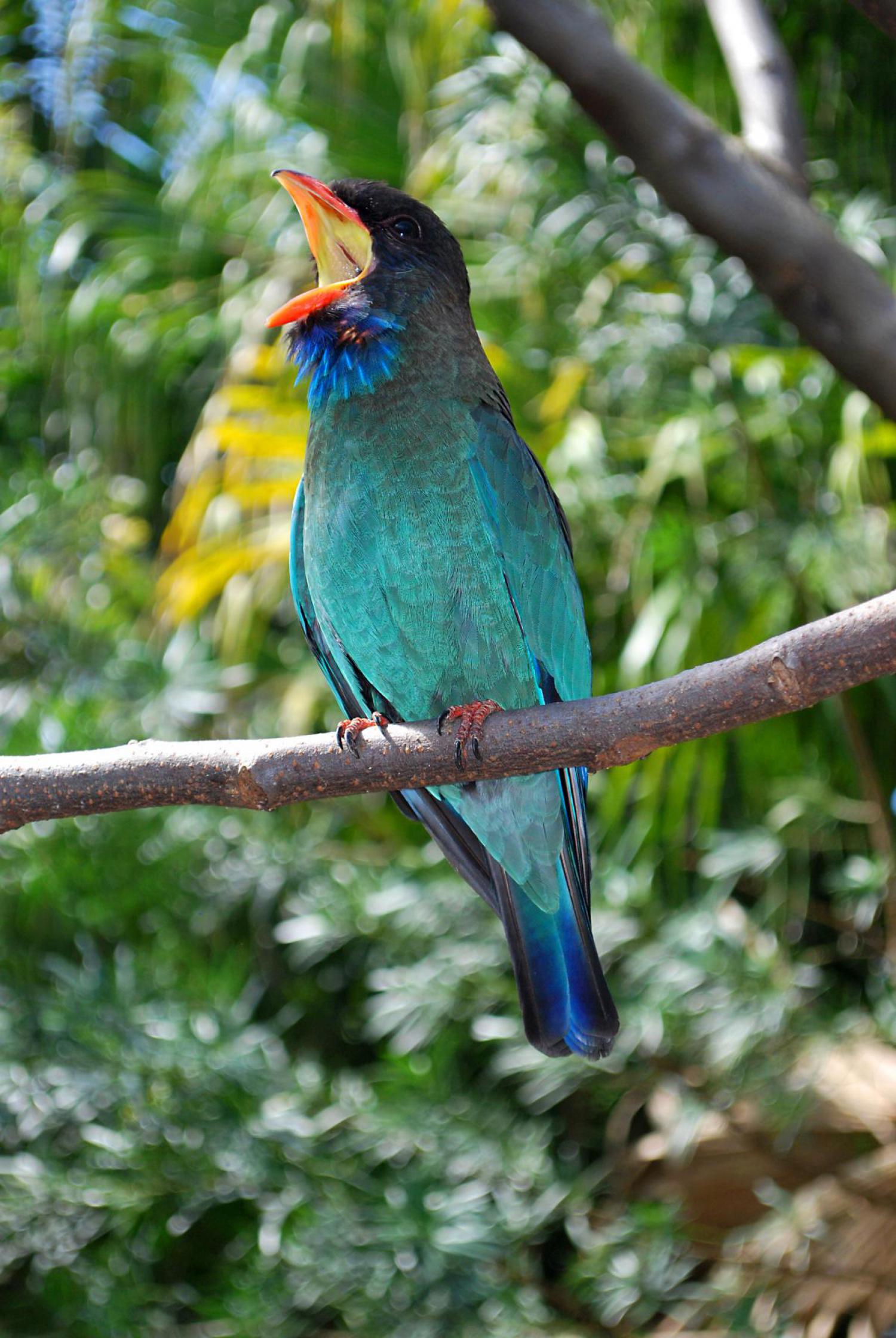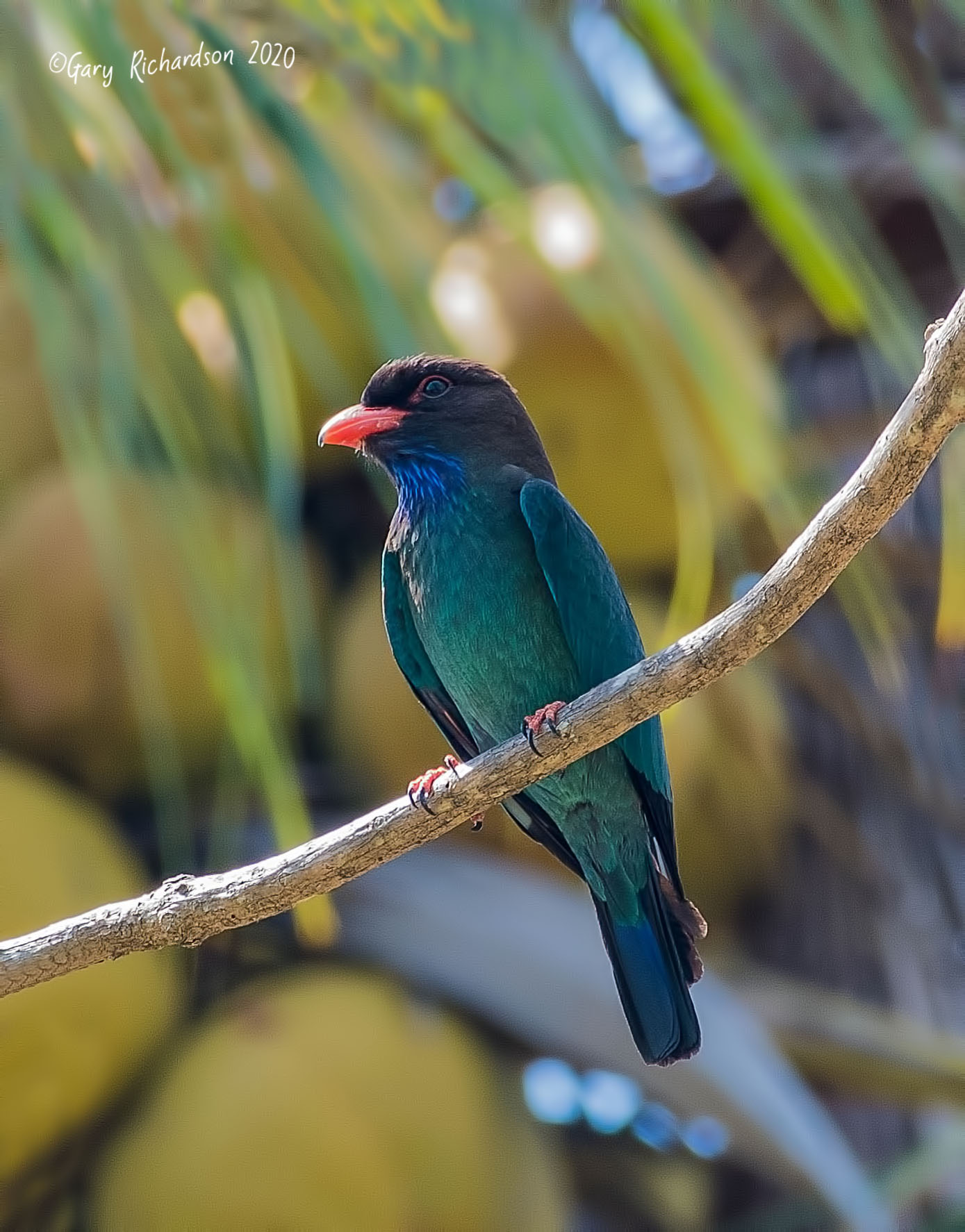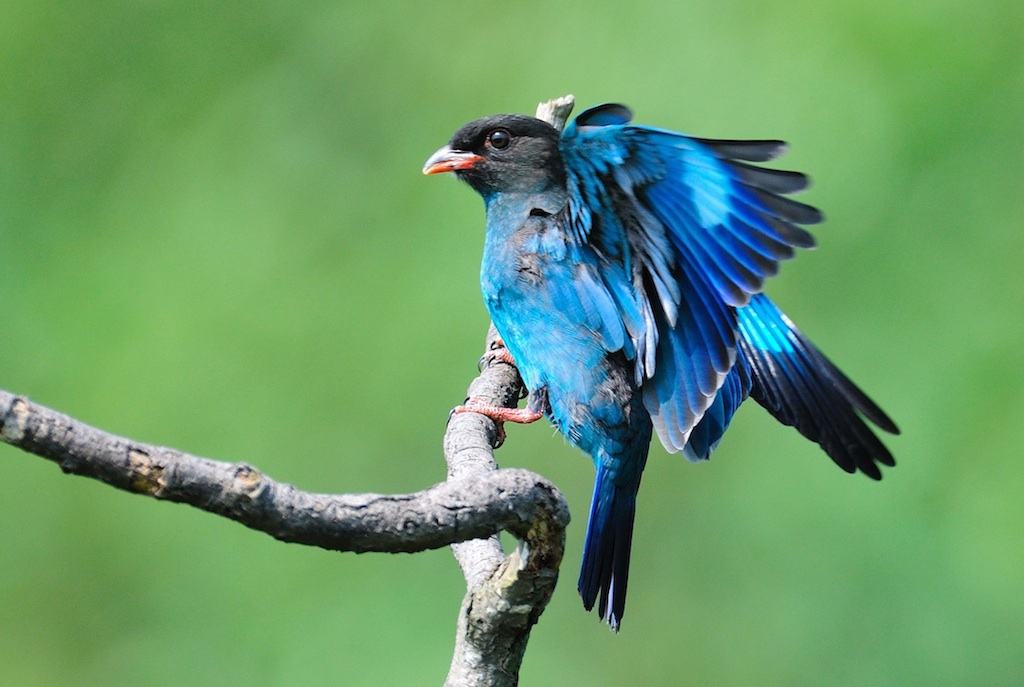The Oriental Dollarbird is a bird of the roller family, so named because of the distinctive pale blue or white, coin-shaped spots on its wings. It can be found from Australia to Korea, Japan and India.

The Oriental Dollarbird has a length of up to 30 cm. It is dark brown but this is heavily washed with a bluish-green sheen on the back and wing coverts. Its belly and undertail coverts are light coloured, and it has glossy bright blue colouring on its throat and undertail. Its flight feathers are a darker blue. Its bill is short and wide and in mature animals is coloured orange-red with a black tip.

It has very light blue patches on the outer parts of its wings which are highly visible in flight and for which it is named. The females are slightly duller than the males but overall the two are very similar. Immature birds are much duller than the adults and do not have the blue colouring on their throats. They also have brown bills and feet instead of the red of the adults.

The Oriental Dollarbird is most commonly seen singly with a distinctive upright silhouette on a bare branch high in a tree, from which it hawks for insects, returning to the same perch after a few seconds. It is a bird that loves to fly. It can soar high in the sky, dive fast, and even catch insects in mid-air. It also uses different lighting, angles, and backgrounds to create stunning effects and contrasts.

The Oriental Dollarbird breeds in northern and eastern Australia between the months of September and April and winters in New Guinea and nearby islands. The birds prefer open wooded areas with hollow-bearing trees to build nests in. They lay two to four white eggs in a tree hole. The incubation period is about 20 days, and the young fledge after about 30 days.

The Oriental Dollarbird is a beautiful and fascinating bird that can captivate anyone with its bright plumage and agile flight. It is a bird that can make you smile and admire the beauty and diversity of nature.





